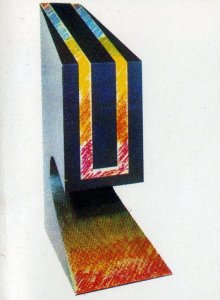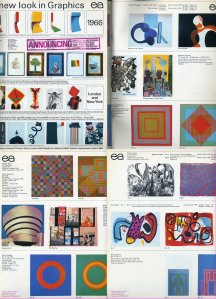Richard Smith emerged as a formidable painter in the early Sixties, initially with colour field works. In addition to purely abstract considerations, Smith then began to explore Pop culture interests, especially in terms of the packaging of consumer goods. A big breakthrough came in 1963 when Smith started to use shaped canvases – combining two dimensional representations of box forms with actual physical projections from the flat surface; Gift Wrap is a great example – see: http://www.tate.org.uk/art/artworks/smith-gift-wrap-t02004
Like Allen Jones’s ‘shelf’ paintings and prints, Smith’s work in the early/mid Sixties occupied an intriguing ‘second-and-half dimension’. Smith himself maintained that these were paintings and his concern was with painting practice, not sculpture. However, the innovative ‘multiples’ Smith created and which Editions Alecto published in 1966 were free standing. Called ‘Sphinx Series’, these five works are described in Tessa Sidey’s ‘Editions Alecto’ as follows:
Five three-dimensional screenprints, printed on paper applied to white fabricated metal;
Each contained in black slip box, 454 x 288 mm; Edition: 50 with 10 artist’s proofs
Editions Alecto’s pioneering energy with the multiples concept together with the quality of Smith’s vision and craft skills make this an enduringly pleasing exemplar of mid-Sixties art scene innovation:
1063 I EA # 303:
1064 II EA # 304:
1065 III EA # 305:
1066 IV EA # 306:
1067 V EA # 307:







